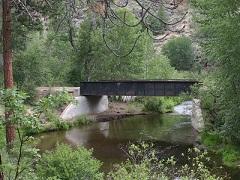Hobo Camp Day Use Area near Susanville now open
Organization:
BLM Office:
Media Contact:
SUSANVILLE, Calif. ¬– The Bureau of Land Management has announced that the Hobo Camp Day Use Area near Susanville is now open for the spring, summer and fall recreation season, offering access to the Susan River, the Bizz Johnson National Recreation Trail and the Southside Trail.
The main vehicle gate on South Street will be open daily from 8 a.m. to a half-hour after sunset through the season. Exceptions are Saturday, May 22, and Saturday, May 29, when the gate will open at 5:30 a.m. to allow early fishing access for the Lassen County Junior Fishing Derby and for the opening day of the California stream fishing season, respectively.
Hobo Camp is also accessible to walkers, bicyclists and horseback riders from the Susanville Railroad Depot Visitor Center and trailheads on Lassen Street and Miller Road in Susanville.
“We are happy to have Hobo Camp and its excellent Susan River access open for fishing, picnicking, and swimming,” said Emily Ryan, manager of the BLM Eagle Lake Field Office in Susanville. “We are reminding visitors that COVID-19 precautions are still in place on federally-managed areas. We ask that visitors maintain six feet of distancing from others outside of their households and to wear face masks when distancing is not possible.”
Hobo Camp offers picnic tables, barbecues and fire rings, open space for outdoor games, toilets and parking areas in a pine grove setting. There is parking for large vehicles and trailers, including horse trailers. A host is on site.
More information is available at www.blm.gov/visit/bizz-johnson.
The BLM manages about 245 million acres of public land located primarily in 12 western states, including Alaska, on behalf of the American people. The BLM also administers 700 million acres of sub-surface mineral estate throughout the nation. Our mission is to sustain the health, diversity, and productivity of America’s public lands for the use and enjoyment of present and future generations.

